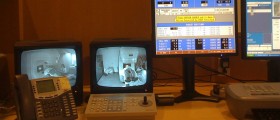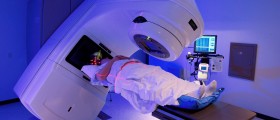
Radiation therapy is a highly potent treatment modality for certain types of lung cancer. It can be used alone but it is generally combined with chemotherapy. The very treatment can be performed before the surgery, after the surgery or it represents a palliative treatment when it deals with symptoms of the advanced disease.
What Radiation Therapy Means
Radiation therapy is a powerful means of killing tumor cells originating from different tissues. The very treatment includes application of high energy ionizing energy which efficiency kills cancer cells, reduce the size of the tumor and deals with certain symptoms caused by local growth of the tumor (for instance pain in bones). Major effects of radiation therapy are seen in case of rapidly dividing cells (which is typical for cancer cells). Still, it is essential to mention that radiation therapy also affects healthy rapidly proliferating cells in the body such as cells of the lining of the intestine etc. This is why radiation therapy has many temporary side effects which can, fortunately, be brought under control with adequate symptomatic treatment.Radiation Therapy for Lung Cancer
The goal of the treatment is to focus high energy beams directly onto the lung cancer. By doing so, radiation damages the DNA of the tumor cells and destroys them. Their ability to reproduce practically vanishes. Radiation of lung cancer can be in two forms, as external beam radiation treatment and internal radiation. In the first case high doses of radiation are delivered by external machines while internal radiation includes insertion of a thin plastic tube into the airway which contains radioactive material necessary for the treatment.
Stereotactic Radiation Therapy for Lung Cancer
This is more complex and precise treatment during which high doses of radiation are delivered directly to the lung tumor in such a manner that practically all the surrounding tissues are spared from the negative effects of radiation. This treatment is also equally effective as surgery and is recommended in elderly people and individuals suffering from diseases which represent contraindication for regular radiation therapy.
Palliative Radiation for Lung Cancer
Palliative radiation therapy for lung cancer is only treatment for symptoms and signs of the advanced tumor. It deals with pain, breathing difficulties etc. and is not efficient means of complete tumor eradication. The treatment may include radiation of the lungs, mediastinum, bones or the head.
Radiation Therapy for Lung Cancer Side Effects
There are different side effects of radiation therapy for lung cancer. If radiation is combined with chemotherapy, they may become even more complex. Some of potential problems that can develop as a consequence of radiation therapy include esophagitis, pneumonitis, later problems with the heart, lung fibrosis etc. The skin of the treated area may be red (erythematous), itchy and moderately burned. Fortunately, since the technology has significantly progressed, today these side effects do not occur so frequently, and even if they do, they are adequately treated.

















Your thoughts on this
Loading...